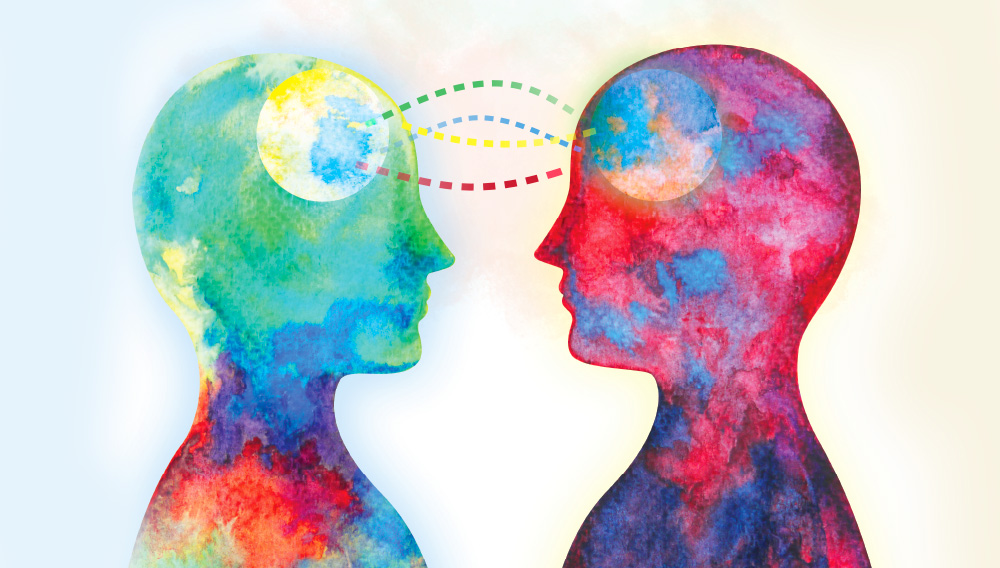
Mental well‐being is a fundamental pillar of our overall health, yet many of us struggle to open up about our true feelings. Have you ever felt overwhelmed by emotions that seem too heavy to carry alone? In this article, we explore the psychological science behind the power of sharing your emotions. Discover research-backed insights and practical strategies that reveal how verbalizing your feelings can reduce stress, enhance connections, and build resilience. Whether you’re dealing with a recent setback or chronic anxiety, understanding how to harness the healing power of communication can be life-changing. Embrace vulnerability and learn how your voice can pave the way for a healthier, more fulfilling life.
Understanding the Psychology of Emotions
Emotions play a critical role in shaping our thoughts and behaviors. Psychological theories emphasize that our emotional lives are not meant to be suppressed; rather, they guide us through the complexities of human experience. Recognizing this process can help explain why sharing emotions is essential for mental health.
Historically, figures like Carl Jung and Sigmund Freud argued that suppressed emotions could lead to mental disorders. Recent studies confirm that acknowledging and verbalizing our feelings fosters healthier coping strategies and emotional regulation. By articulating your inner state, you engage in self-reflection and validation, which can effectively relieve stress.
In today’s fast-paced world, communication is key not only to understand but also to release emotional pressures. Whether you share your feelings with a trusted friend or seek professional help, opening up can provide clarity and relief. It’s important to understand that vulnerability is a strength that contributes to robust mental health.
The Science Behind Expressing Your Feelings
Research into the biological basis of emotion shows that expressing feelings triggers a cascade of beneficial neurochemical responses. Releasing pent-up emotions helps lower cortisol levels, the hormone most closely linked to stress, promoting a more relaxed state and improved mood.

Studies from institutions like the National Institute of Mental Health (NIMH) reveal that people who routinely express their feelings show enhanced activity in the prefrontal cortex. This increased brain function is connected with improved decision-making and emotional balance. Simply sharing your thoughts can clear mental fog and enhance well-being.
Moreover, neural imaging studies demonstrate that discussing your feelings strengthens the links between the limbic system and the cerebral cortex – areas crucial for processing emotions and building empathy. Such scientific insights support the direct connection between voicing our internal state and maintaining a balanced mind.
Neurochemical Reactions and Emotional Relief
When you speak about your feelings, your brain releases endorphins—natural pain relievers that induce feelings of pleasure and contentment. This reaction can enhance your mood and reduce anxiety.
Researchers also note that sharing emotions creates a positive feedback loop: expressing distress can trigger the release of oxytocin, known as the bonding hormone, which reinforces trust and social connections.
Brain Connectivity and Emotional Intelligence

Ongoing studies highlight that individuals with well-integrated brain systems often display greater emotional intelligence. This integration is enhanced through regular, open dialogue about feelings.
By engaging in honest emotional communication, you not only experience immediate relief but also strengthen neural pathways that support long-term mental health and resilience.
Practical Strategies for Sharing Your Emotions
Understanding the science is essential, but knowing how to share your emotions is equally important. Begin by identifying safe spaces—both physical and emotional—where you feel secure opening up.
Journaling is a simple yet transformative technique. Writing down your emotions allows you to reflect on your inner state, gradually building the confidence to share your feelings with others. This practice not only offers an emotional outlet but also creates a record of your personal growth.
Consider also integrating active listening into your daily interactions. When you share your emotions, ensure that the conversation is a two-way street. Encouraging dialogue and validating others’ experiences builds empathy and deepens your emotional connections.
Overcoming Barriers: Why We Often Stay Silent

Numerous internal and external factors can hinder the expression of our emotions. Social stigma, fear of judgment, and personal insecurities are among the most common barriers. Identifying these obstacles is the first step in overcoming them.
Cultural upbringing and personal history sometimes promote the suppression of feelings. Recognizing that these behaviors are learned can empower you to break the cycle of silence and foster a more open approach to emotional expression.
In today’s digital era, the prevalence of superficial interactions on social media can also contribute to our reluctance to open up. Overcoming these challenges requires not only personal change but also a societal shift in how we view vulnerability.
Challenging Social Norms
It is essential to question long-held beliefs that label emotional expression as a weakness. Cultivating environments—at home, in workplaces, and in communities—that celebrate vulnerability can create lasting change.
Recent campaigns and social experiments show that when people are encouraged to share their emotions, their mental health and overall happiness improve significantly.
Building Self-Esteem and Resilience
Enhancing your self-esteem, whether through professional support or self-help techniques, can gradually diminish the fear of judgment. Such inner work builds the confidence needed to express your true self.
Small, daily practices—like recording your feelings in a journal or participating in supportive group discussions—can strengthen the resilience required to face societal stigmas.
Real-Life Success Stories and Future Outlook
Real-life stories vividly illustrate the benefits of opening up. Many individuals have experienced profound transformations simply by sharing their emotions. Their journeys light the way for others who are still in silence.
For example, many who have undergone cognitive-behavioral therapy attest that discussing their inner turmoil helped them reconnect with forgotten parts of themselves, leading to stronger relationships and a renewed sense of purpose. This human connection stands as a powerful catalyst for change.
Looking ahead, the field of psychology is increasingly integrating emotional expression into treatment protocols. Innovations such as virtual therapy and community-based support networks are making it easier than ever to connect, heal, and move forward.

Inspiring Testimonies
Countless individuals have shared life-changing stories that highlight how discussing feelings transformed their lives. Their experiences underscore the deep link between mental health and social support.
Whether through personal blogs or community forums, these testimonials remind us that healing is both a personal and collective journey, sparking a ripple effect of positive change.
Innovations in Mental Health Treatments
The mental health landscape continues to evolve with new methods that emphasize emotional sharing. Digital platforms and online communities now play a key role in promoting safe and supportive communication.
As further research validates these approaches, we can expect more tailored support systems that help individuals embrace vulnerability without fear.
Contenido Adicional
In our ever-changing society, staying updated with the latest research and trends in psychology is essential. Recent insights underscore that social connectivity—whether through traditional interactions or digital platforms—is key to alleviating feelings of isolation. Participating in group activities, joining support networks, or simply engaging in regular family discussions can have a profound impact on mental health.
Experts suggest that combining mindfulness and meditation with honest emotional expression creates a powerful therapeutic synergy. While mindfulness calms the mind, it also encourages you to stay present with your emotions. When paired with open dialogue, these practices can disrupt negative thought patterns and build resilience against stress. With the support of professional guidance, these methods highlight the transformative benefits of maintaining an emotionally balanced life.
Furthermore, community-led initiatives are on the rise, offering workshops and seminars that teach effective methods for emotional expression. These grassroots efforts provide practical tools for understanding and sharing your inner world. Educational programs focused on emotional literacy are gaining momentum in schools and workplaces, proving that early intervention can lead to a more empathetic and healthier society.
In summary, the science behind expressing one’s feelings goes beyond theory—it offers practical benefits that can transform your mental health. By sharing your emotions, supported by psychological research and real-life examples, you can reduce stress, improve relationships, and even boost your physical health. Although talking about your feelings might seem daunting, the rewards are significant. Taking the step to open up is an act of courage that fosters self-acceptance and overall wellness. Remember, speaking your feelings is a vital form of self-care that strengthens both mind and body while building a supportive community around you.




